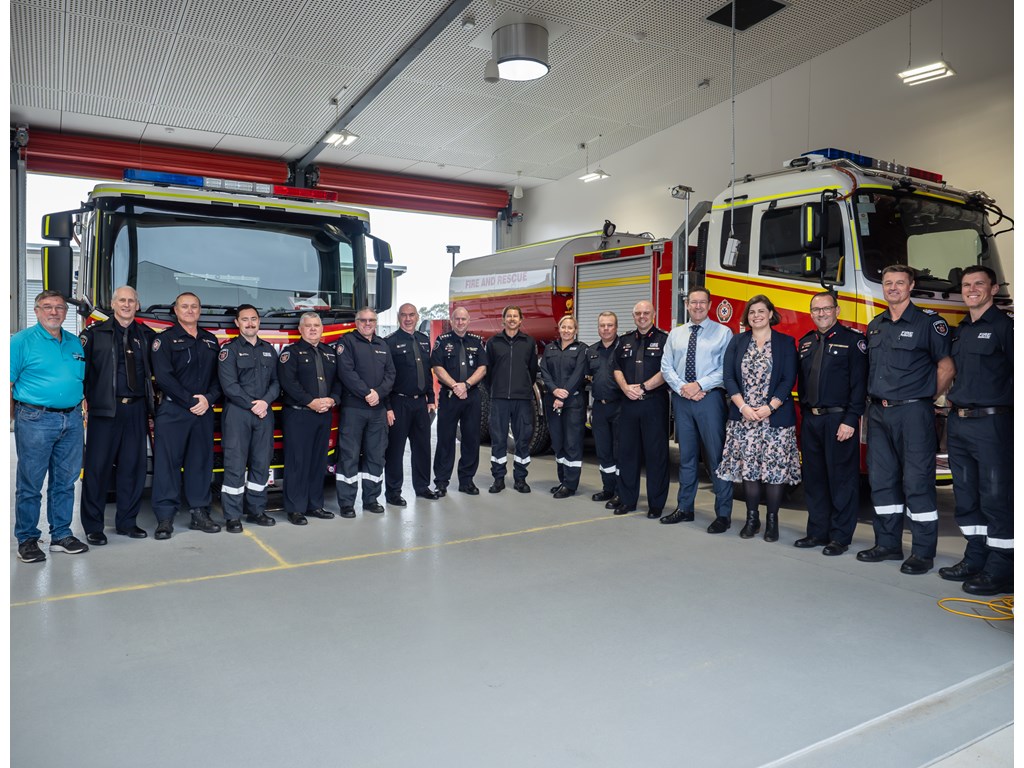Recent statistics reveal that while women comprise nearly half of the total Australian workforce, they represent only a fraction of those employed in construction roles. According to the Australian Constructors Association, women only make up 12% of the construction workforce. Research demonstrates that companies with diverse teams not only exhibit higher levels of innovation and productivity, but also enjoy improved financial performance. McKinsey states that highly gender-diverse companies have a 25% higher chance of achieving above-average profitability.
In 2024, the Australian construction industry still faces challenges with skilled labour shortages, which are exacerbated by systemic barriers such as discrimination, gender bias, unequal pay, hostile work environments and limited advancement opportunities. In a post-pandemic sector grappling with surging costs and a shrinking skilled workforce, these barriers continue to hinder the full participation of women in the construction workforce.
In this Q&A article, CEO + Founder of EPIC Angela Hucker and PlanRadar’s Regional Lead (Australia + New Zealand) Leon Ward examine some of the key factors driving this gender disparity, and why now is the perfect time to look at why gender diversity – not just for equality, but also for the future success of the industry.
What are some of the primary challenges hindering gender diversity in the construction industry, especially in Australia?
Angela Hucker:
In addressing the challenges to gender diversity within Australia’s construction sector, recent research, including a February 2024 study by the NSW Building Commission, provides insightful data. This study revealed significant barriers faced by women: 51% of women expressed concern about differential treatment due to gender; 41% were equally worried about sexual harassment, unequal pay, and limited career advancement opportunities; and 32% feared bullying. These findings underscore the persistent systemic issues in a predominantly male industry, which deter women from entering and remaining in the field. These barriers not only hinder individual careers but also impact the industry’s growth and innovation by limiting diversity.
Leon Ward:
A key challenge hindering gender diversity in the construction industry, especially in Australia, is the persistent gender pay gap. Despite equal effort and work performance to their male counterparts, Workplace Gender Equality Agency (WGEA) data shows a median remuneration gap of 31.8% between men and women, exacerbating feelings of inequality and discouraging women from entering or remaining in the field. Closing the gender pay gap requires transparent salary policies, regular pay audits to identify and address disparities, and a commitment from industry stakeholders to pay women equally for their contributions.
How do cultural attitudes and gender bias impact women’s participation and advancement in the construction field? What can be done to address these barriers?
Angela Hucker:
Cultural attitudes and gender bias significantly impact women’s participation and advancement in the construction field. Traditionally, construction has been perceived as a male-dominated industry, both physically demanding and requiring skills stereotypically associated with men. This cultural stereotype discourages women from pursuing careers in construction from an early age. Gender bias further manifests in the workplace through unequal treatment, such as lesser opportunities for training and advancement, or through more overt forms like harassment, bullying and discrimination.
Addressing these barriers requires a multifaceted approach. Firstly, promoting gender diversity should start from educational institutions, introducing young women to construction careers through programs and partnerships with schools. Secondly, companies need to enforce strong anti-discrimination policies, provide subconscious bias training, and ensure equal opportunities for growth and development for all employees. Additionally, tailored support programs for women can be beneficial, where female industry leaders can guide and support newer female entrants to the field.
Creating a more inclusive culture also involves visible commitment from leadership. This can be demonstrated through transparent hiring and promotion practices, as well as by fostering an environment where all employees feel safe and valued. By tackling these cultural and systemic issues, the construction industry can become more welcoming and equitable for women, leading to better innovation and productivity outcomes.
Leon Ward:
Outdated cultural attitudes and gender bias creates significant hurdles for women seeking to enter or advance within the construction field, particularly in Australia. From a young age, societal expectations often steer women away from careers in traditionally male-dominated industries like construction, reinforcing the notion that these fields are not suitable for them. Once women are employed in construction roles, they often face workplace discrimination, harassment or unequal treatment due to these misconceptions. Additionally, gender bias in hiring, promotion, and workplace interactions can significantly limit opportunities for women to advance within construction companies – and frequently contribute to feelings of isolation or exclusion.
To tackle these obstacles, the construction industry needs to push for inclusivity across the board. This means adopting transparent hiring and promotion methods, regulatory incentives for ensuring everyone has equal chances for training and development, and creating an industry work environment that values diversity and respects the unique perspectives of all employees.
What role do educational and regulatory institutions play in encouraging women to pursue careers in construction, and in your opinion, how can they better support gender diversity initiatives?
Angela Hucker:
Educational and regulatory institutions play pivotal roles in encouraging women to pursue careers in construction and supporting gender diversity initiatives. These bodies can significantly influence both the perception and the infrastructure of the industry to make it more inclusive.
Educational institutions can introduce and normalise the concept of women in construction from an early age. By integrating construction-related courses in school curricula and emphasising STEM education for girls, they can cultivate interest and skill sets applicable to the construction industry. TAFEs and universities can further support this by offering scholarships and dedicated programs for women in construction management, engineering, and related fields. Additionally, career counselling services should actively promote these opportunities and provide guidance tailored to young women.
Regulatory bodies have the authority to enforce policies that ensure a fair and equitable working environment. They can implement strict anti-discrimination and harassment laws specific to the construction industry. Furthermore, regulations can mandate diversity quotas or incentives for companies that actively engage in hiring and promoting women. These bodies can also standardise and publicise metrics of gender diversity within the industry, holding companies accountable and rewarding those that demonstrate real progress.
To better support gender diversity initiatives, both educational and regulatory institutions could collaborate more closely with industry leaders to ensure that educational programs are aligned with actual industry needs and that regulatory frameworks are effectively enforced. Workshops, seminars, and awareness campaigns can be jointly organised to shift industry perceptions and educate about the benefits of gender diversity. Moreover, these institutions can support research into the barriers women face in the construction industry and develop targeted strategies to address these issues. By doing so, they can help create a more inclusive and supportive environment that not only attracts but also retains women in the construction field.
Leon Ward:
Both educational and regulatory institutions have a critical role to play in encouraging women to pursue careers in construction and supporting gender diversity initiatives within the industry. Educational institutions can help by offering more vocational training programs and apprenticeships that are accessible to women and by actively promoting construction careers as viable options for all students – and inclusive curriculum materials that focus on workplace respect and psychological safety.
Regulatory institutions also play a vital role in promoting gender diversity in the construction industry by establishing and enforcing policies that support equal opportunity and fair treatment for all workers. However, there is often a lack of specific regulations addressing gender diversity in construction, which can perpetuate systemic inequalities and hinder progress towards a more inclusive workforce. To better support gender diversity initiatives, regulatory bodies could implement measures such as gender quota requirements for construction projects, mandatory reporting on gender pay gaps within construction firms, and incentives for companies that demonstrate commitment to diversity and inclusion.
How do workplace policies and practices need to evolve to create a more inclusive environment for women in construction?
Angela Hucker:
To create a more inclusive environment for women in the construction industry, workplace policies and practices need significant evolution in several key areas:
Recruitment and hiring practices: Companies should implement unbiased recruitment strategies that actively seek to attract women. This can include using gender-neutral language in job postings, advertising in forums frequented by women, and ensuring diversity in hiring panels. Additionally, establishing partnerships with educational institutions that have strong female representation in construction and engineering programs can help attract female graduates.
Equal pay and benefits: Companies must commit to equal pay for equal work by regularly reviewing and adjusting compensation packages to eliminate gender disparities. Benefits should also support a diverse workforce, including policies like parental leave and flexible working conditions that accommodate employees’ responsibilities outside of work.
Training and development: Providing comprehensive training programs that include leadership development for women and regular bias training for all employees, especially management, is crucial to change the underlying cultural attitudes that can impede women’s advancement.
Safety and harassment policies: A zero-tolerance policy towards all forms of harassment must be strictly enforced. This includes clear procedures for reporting harassment, bullying and discrimination with swift disciplinary actions against offenders, and regular training sessions on workplace behavior. Additionally, ensuring that personal protective equipment (PPE) and uniforms are suitable for women is essential for their safety and comfort.
Coaching and mentoring: Providing tailored coaching and mentoring programs where experienced professionals can guide and support women can be very effective and helps provide additional support structures for women.
Work-life balance: Adopting flexible work practices such as job sharing, flexible hours, and the possibility for remote work where feasible. These practices can help employees manage the demands of both their professional and personal lives more effectively.
Leadership commitment: Leadership must visibly support and commit to gender diversity. This can be demonstrated through regular communication about the importance of diversity and inclusion, participation in diversity training, and setting diversity goals that are integrated into the company’s strategic objectives.
With evolving policies and practices in these areas, construction companies can create more inclusive workplaces that not only attract but also retain and empower women, leading to a more diverse and productive industry.
Leon Ward:
To create a more inclusive environment for women in construction, workplace policies and practices need to adapt to address the unique challenges they may encounter. This includes establishing clear pathways for career advancement and professional development opportunities for women, ensuring that they have equal access to training and promotion opportunities. Implementing transparent and equitable compensation practices, including regular pay audits to identify and address any gender pay gaps, is essential. However, fostering a culture of diversity and inclusion where all employees feel valued and respected, regardless of gender, is critical to attracting and retaining female talent in the construction industry.
What steps can be taken to challenge and change the prevailing gender biases within the construction industry? What role can individual workers play in this effort?
Angela Hucker:
Challenging and changing the prevailing gender biases within the construction industry requires concerted efforts at both the company and individual levels.
At a company level:
Policy and practice overhaul: Implement and enforce strong anti-discrimination policies that specifically address gender biases, sexual harassment, and equal pay. Regular diversity training for all employees, including management, to raise awareness about implicit biases and how to combat them. Transparent recruitment and promotion processes that encourage gender equality, including structured interviews and diverse hiring panels.
Visibility and representation: Promote women into leadership roles and ensure their visibility in all company communications and branding to normalise women in construction. Highlight successful women through case studies and testimonials to serve as role models for other employees and newcomers.
Support and resources: Create support networks like women’s forums or committees within the company. Provide resources that address the specific needs of women in construction, such as mentorship programs, networking opportunities, and career development workshops.
Work environment adaptations: Ensure that all work equipment and facilities (like uniforms, safety gear, and amenities) cater equally to men and women. Flexible work arrangements to help balance work and personal life, which can be a significant barrier for women with family responsibilities.
At an individual level:
Education and awareness: Engage with training and workshops on gender sensitivity and inclusivity to better understand the challenges faced by women and the benefits of a diverse workplace. Stay informed about the rights and resources available, and advocate for adherence to policies and improvements where necessary.
Advocacy and support: Support and mentor female colleagues by sharing knowledge, providing guidance, and advocating for their work and accomplishments. Challenge discriminatory behavior when witnessed, by either reporting it to HR or confronting it directly in a professional manner, depending on the situation.
Personal accountability: Reflect on personal biases and consider how individual actions and language can contribute to a more inclusive environment. Encourage open dialogue among peers to discuss diversity and inclusion, sharing experiences, and ideas on how to improve the workplace.
Participation in change initiatives: Participate in or lead initiatives aimed at increasing gender diversity. This could be anything from organising workshops, speaking at industry events about gender diversity, or participating in policy review committees.
By taking these steps, both companies and individuals can play pivotal roles in challenging and changing the entrenched gender biases within the construction industry. This will not only make the industry more inclusive for women but also enhance the overall culture and productivity of the industry.
Leon Ward:
Construction companies can start by implementing diversity training programs to raise awareness of unconscious bias and promote inclusive attitudes among employees. Establishing clear policies and more stringent procedures to address discrimination and harassment in the workplace sends a strong message that such behaviour will not be tolerated. Individual workers can also play a role by speaking out against discriminatory behaviour when they see it, and actively supporting the safety and wellbeing of their female colleagues. Importantly, creating opportunities for women to participate in leadership roles and decision-making processes within construction organisations can help build a stronger sense of teamwork – one that demonstrates that the opinions of all workers and personnel carry equal weight.
Looking to the future, what are the key milestones or goals that need to be achieved to ensure sustained progress in addressing safer and more inclusive workplaces for women in the Australian construction industry?
Angela Hucker:
The Australian construction industry needs to achieve several key milestones to ensure sustained progress in creating safer and more inclusive workplaces for women.
Achieving gender parity in leadership positions – Setting clear goals for gender parity in leadership within construction firms is crucial. This involves not only promoting women into senior roles but also ensuring that recruitment and succession planning processes are bias-free and inclusive.
Implementing flexible work practices – Adopting flexible work practices that cater to the diverse needs of all employees, including women, can help reduce barriers to full participation. This might include flexible hours, remote work options, and job-sharing opportunities.
Establishing robust anti-harassment policies and procedures – Implementing and rigorously enforcing anti-harassment policies that protect all workers and create a zero-tolerance culture towards any form of discrimination, bullying or harassment is essential.
Regular bias training – Ensuring that all employees undergo regular training that covers gender sensitivity, unconscious bias, and inclusivity to foster a supportive workplace culture.
Comprehensive safety measures – Updating safety protocols to include considerations specific to women, such as appropriate personal protective equipment (PPE) and mandatory facilities, such as toilets, and conducting regular safety audits to maintain high standards.
Creating transparency in pay and advancement – Implementing transparent processes for pay, promotions, and appraisals that are monitored for gender equity to ensure women are paid equally and have equal access to advancement opportunities.
Support networks and tailored programs – Developing support networks and tailored programs specifically to support women in the construction industry, and help them successfully navigate issues they may experience in the industry.
Focusing on these goals, the construction industry can make significant strides toward a more inclusive and safer work environment for women.
Leon Ward:
In order to ensure sustained progress in addressing safer and more inclusive workplaces for women in the Australian construction industry, several key milestones and goals must be prioritised:
Implementing comprehensive training programs on safety and harassment prevention tailored to the needs of women in construction is essential for creating a supportive work environment.
Promoting diversity and inclusion at all levels of the organisation, from entry-level positions to leadership roles, is crucial for fostering a culture of respect and equality.
Establishing accessible mechanisms for reporting and addressing instances of harassment and discrimination, and providing support services for affected employees, is essential for creating a workplace where all employees feel safe and valued.
By building these milestones and goals, we can work towards creating a more equitable and inclusive construction industry where women can thrive.








